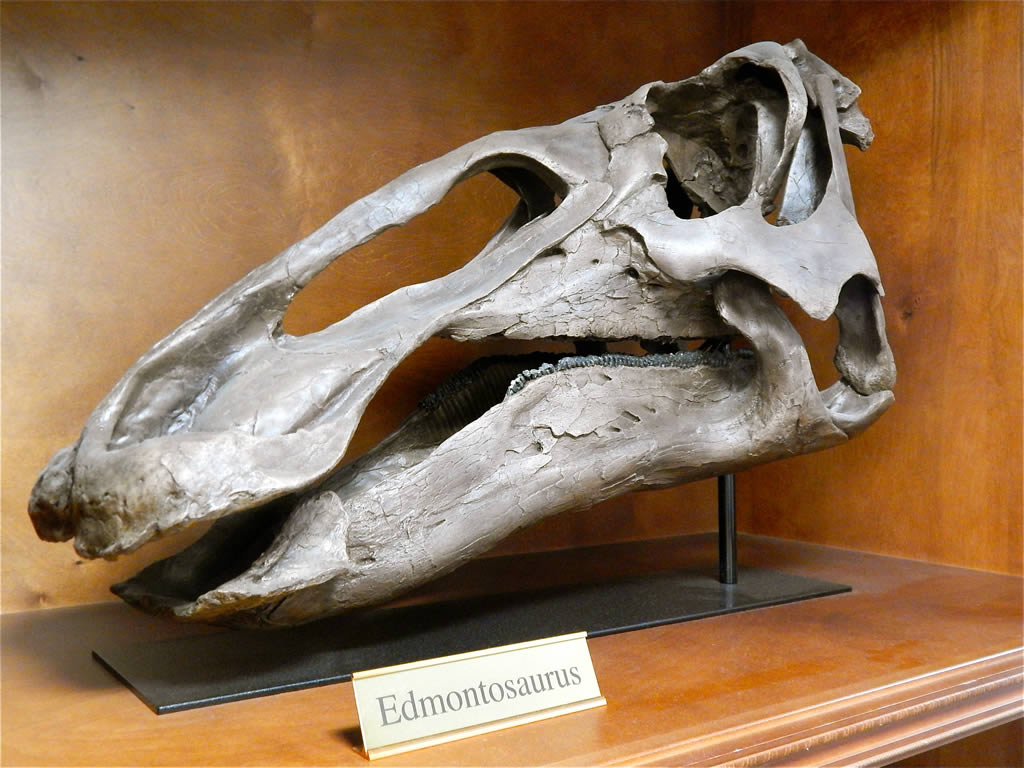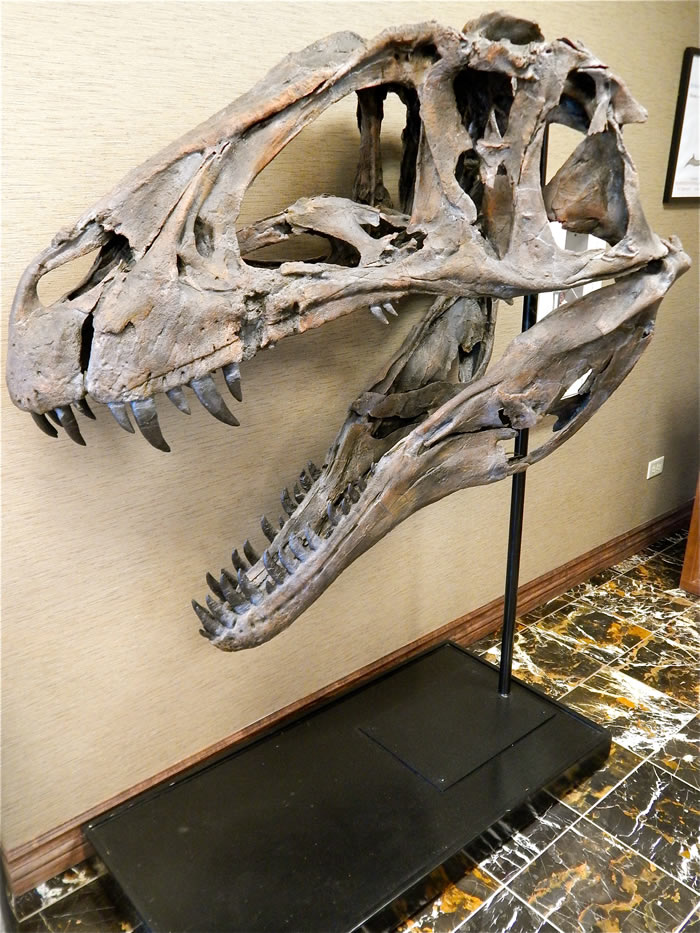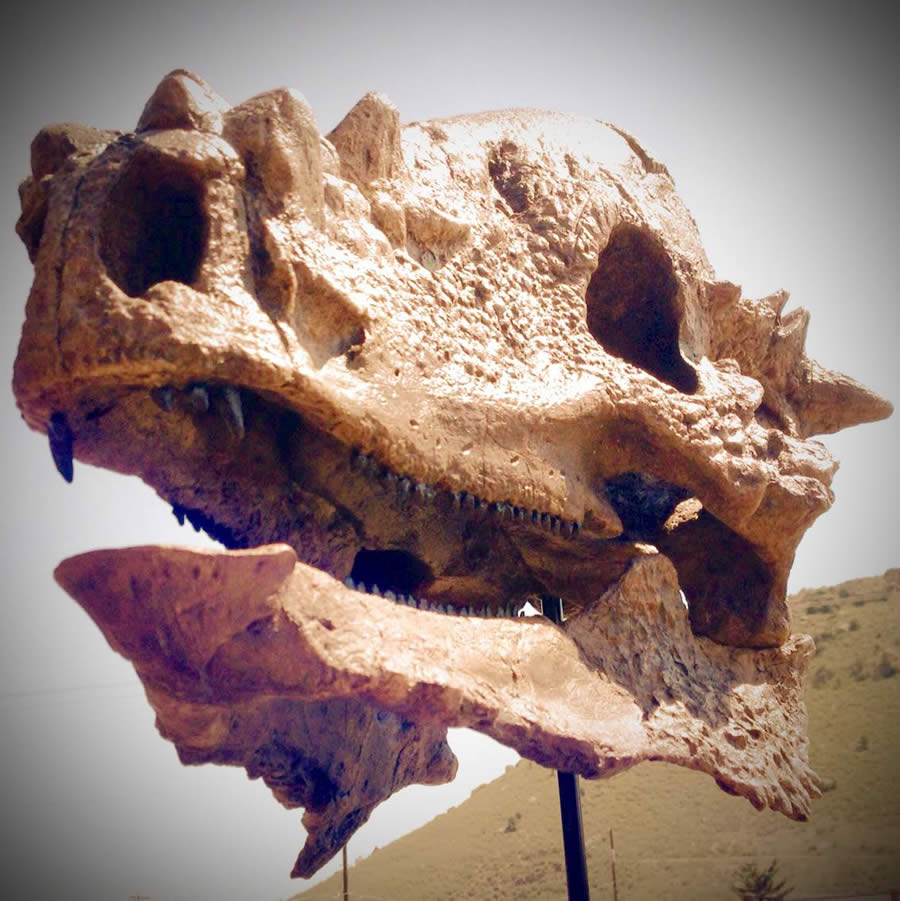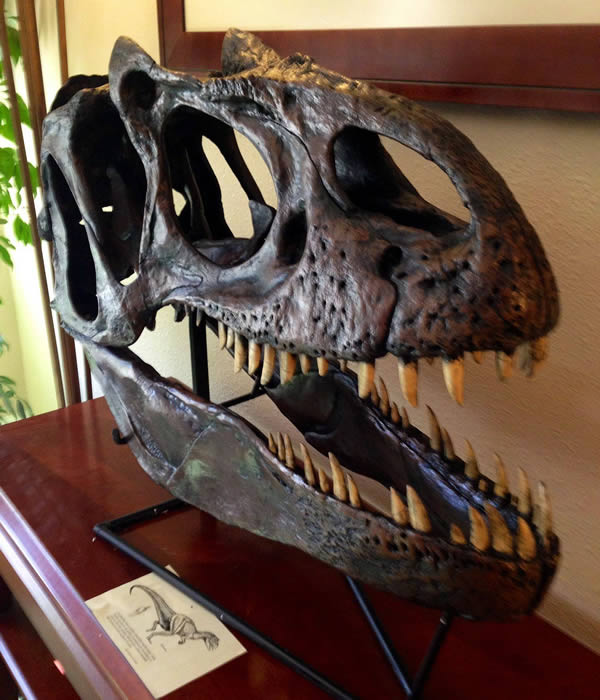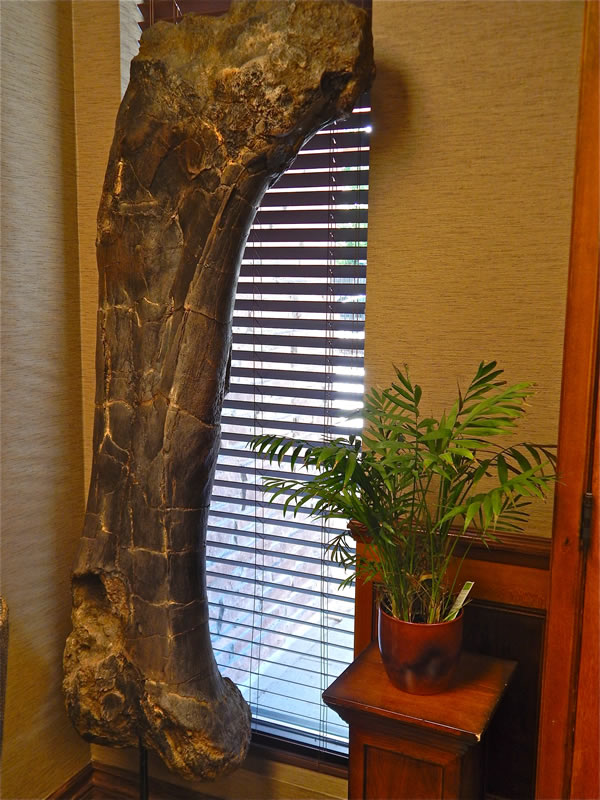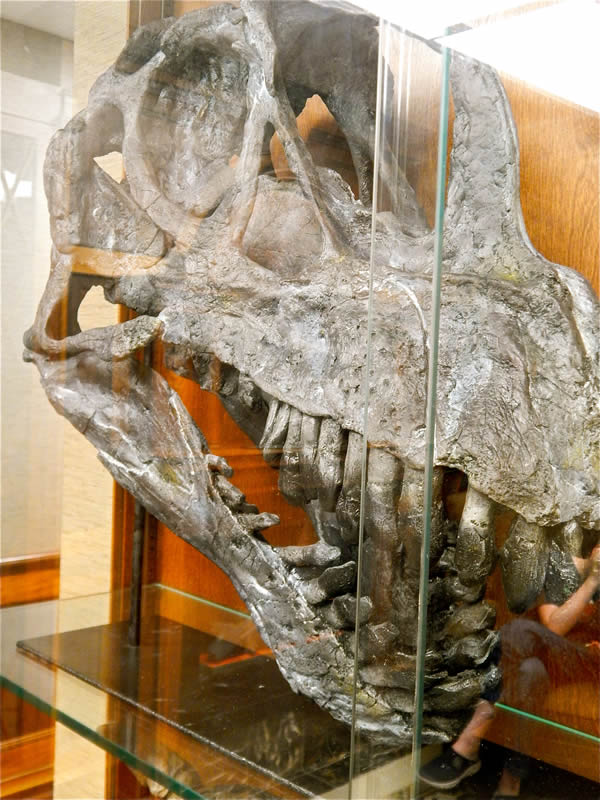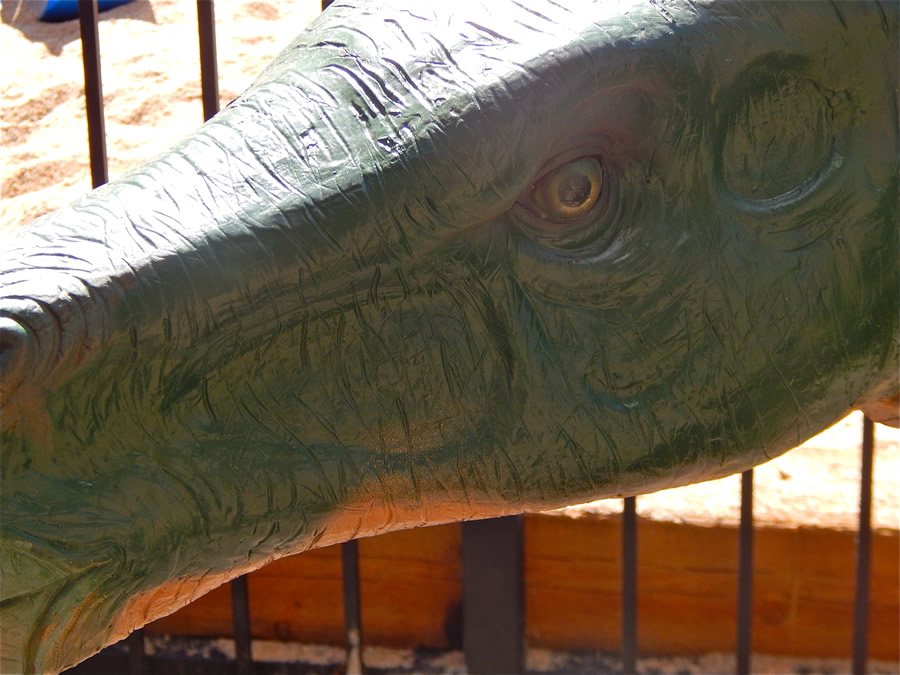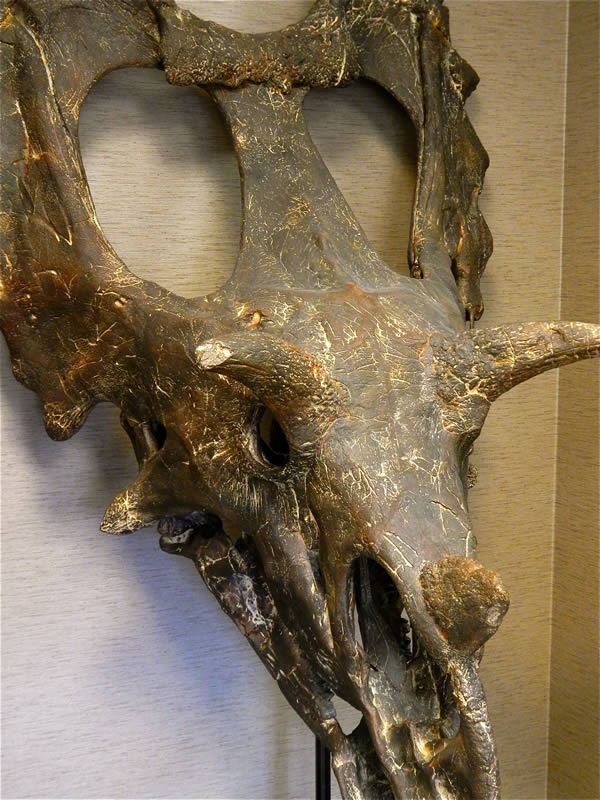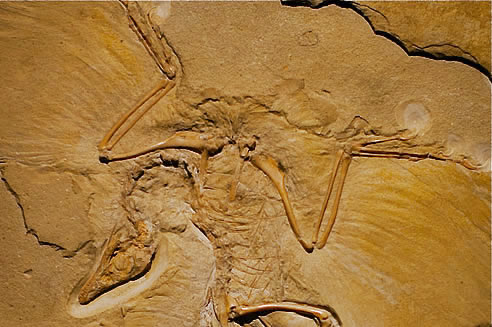Dinosaurs of Best Western Denver Southwest
“Eddie”
“Eddie” is an Edmontosaurus, a type of plant-eating hadrosaur that lived 65 million years ago. in the late Cretaceous. Hadrosaurs were so common, they were often called the cows of the Cretaceous. This herbivore was a prey animal for the dreaded T-Rex. This replica was made from the original collected from the Ruth Mason Dinosaur Quarry north of Faith, South Dakota. The original is now on display at the Seibu Museum near Tokyo, Japan.
“Fran”
“Fran” is an Acrocanthosaurus, a large meat-eating theropod that lived 110 million years ago in the Early Cretaceous. The original Fran was excavated from southeastern Oklahoma, and now resides in the North Carolina Museum in Raleigh. We have replicas of her skull and arm on display in the lobby. In Fran’s complete skeleton, there is evidence of what was probably a near fatal hunting accident: a punctured shoulder blade and several broken ribs that had healed.
“Butthead”
“Butthead” is a Pachycephalosaurus, a plant eater that lived 65 million years ago in the Late Cretaceous. Its thick skull was used during mating displays to butt heads with other males to compete for females, like modern bighorn sheep. The original specimen is in the collection of the Black Hills Institute in Hill City, South Dakota.
“Jim Bob”
“Jim Bob” is an Allosaurus, a meat-eating predator from 150 million years ago in the late Jurassic. He is nicknamed in honor of Dr. Robert Bakker and Jim Madsen, two famous paleontologists who studied Allosaurus extensively. The name bearing specimen of this species was first found in Cañon City, Colorado, and now resides at the National Museum of Natural History in Washington, D.C.
The Legs
The Legs are Brachiosaurus femora, upper hind leg bones from one of the largest animals to ever walk the earth. Brachiosaurus was a long- necked sauropod, a plant- eater that roamed the earth 150 million years ago in the Late Jurassic. It is commonly found in the Morrison Formation, just ten minutes away from the hotel. A full grown Brachiosaurus would have been over 80 feet long (24 m) and weighed about 30 tons. That's about the length of two school buses and the weight of six female Asian Elephants!
“E.T.”
“E.T.” is a Camarasaurus, a long-necked dinosaur very common to the Late Jurassic of 150 million years ago They grew to be about 35 to 55 feet (11-17 m) long. The original is on exhibit at Sauriermuseum Athal, Switzerland.
“Wadsworth” & “Stanley”
Located behind the front desk and in front of the hotel, respectively, these Stegosaurus lived 150 million years ago in the Late Jurassic. These armor-plated plant-eaters were first dug out of Dinosaur Ridge in the 1870s, just a few minutes away from the hotel! Stegosaurus is the State Fossil of Colorado, and Stanley is the hotel mascot, so you will find many more stegosaurs around the property. How many can you find?
“Judith”
“Judith” is a Ceratops montanus, a type of frill-necked plant-eating dinosaur from 75 million years ago, during the Late Cretaceous. On Judith’s left side, you will notice a hole, where a puncture mark from a bite or horn grew infected. The smaller hole indicates the infection was serious enough to eat away the bone. Yuck!
Archeopteryx Panel
This flying reptile’s fossil remains have been found primarily in the Solnhofen limestone of Bavaria, Germany, a rock layer that existed at the same time as our local Jurassic Morrison Formation, 150 million years ago. This transitional fossil forms the missing link between birds and dinosaurs. The original specimen resides in the Museum für Naturkunde in Berlin, Germany.

